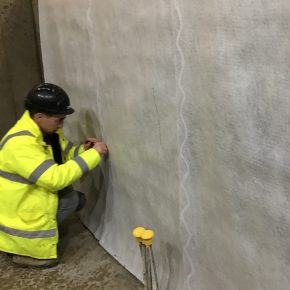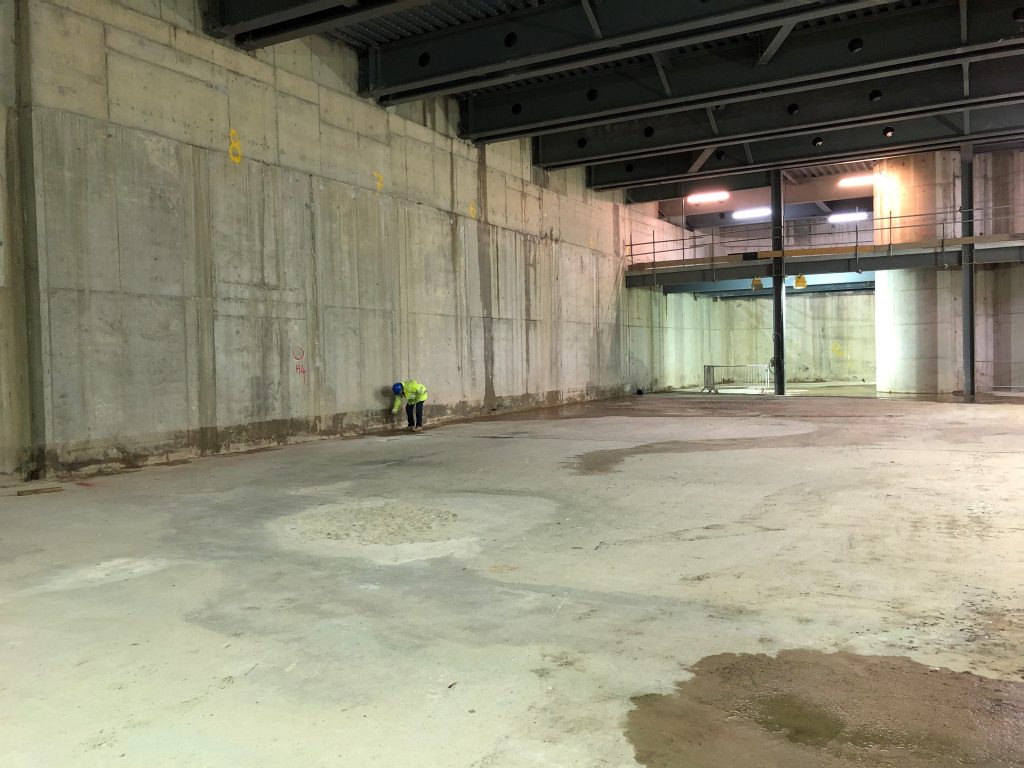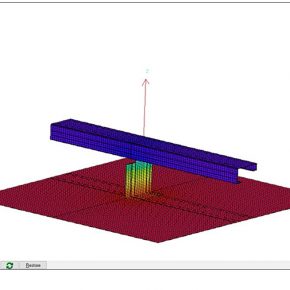
Waterproofing Design – a robust solution from Delta
The British Standard regarding structural waterproofing is BS8102:2009 – this standard encourages the use of a Waterproofing Design Specialist to a design team, explain Delta Membranes.
NHBC Chapter 5.4 mirrors these guidelines. In cases of litigation or disputes both BS8102:2009 and NHBC Chapter 5.4 will be used as a benchmark.
Both standards place great emphasis on creating a robustly waterproofed environment in both domestic and commercial structures. The advantages are clear in terms of protecting the integrity of a structure.

There are three categories of waterproofing systems available:
Type A (Barrier) Protection
Type A waterproofing relies on applying a waterproofing material to the internal or external walls and floor slab of a below ground structure. The structure itself is not considered to be integrally waterproof. The Type A protection needs to be 100% defect-free to offer perfect protection.
Type B (Structurally Integral) Protection
Type B waterproofing requires the structure to be built/constructed as ‘integrally water-resistant’. That the protection from water ingress is the structure itself. Like Type A waterproofing systems, the watertightness of Type B construction is heavily reliant on perfect installation to be entirely effective.
Type C (Drained) Protection
Type C waterproofing is known in the industry as a fool proof system. Unlike Types A and B, Type C systems do not inhibit water pressure/water ingress but controls water ingress in a strategic fashion.
Grades of Habitable environment
Table 2 of BS8102:2009 defines waterproofing requirements to achieve desired internal environments. These three Grades are defined as:
– Grade 1: Where some seepage and damp areas are tolerable – such as car parks, non-electrical plant rooms or workshops.
– Grade 2: Where no water penetration is acceptable but damp areas are tolerable – such as plant rooms or workshops which require a drier environment than Grade 1.
– Grade 3: No water penetration is acceptable – such as living spaces, commercial areas, offices, restaurants and kitchens.
It is important the environmental Grade is defined as early as possible, to ensure expectations are achieved from the outset.
In achieving a Grade 3 habitable space – a combination of two types of waterproofing (A & C, B & C) is usually adequate. In most cases the safest combination will always include a Type C system, whilst the choice of the other system is largely dictated by the type of structure/project requirements.
Another important consideration is whether the basement area will extend beyond the ground floor footprint, such as a buried deck or roof area.
This will also require a waterproofing solution. In most cases, a combination of a waterproofing system along with a protective drainage layer will be required.
The steps to a good design solution
A good CSSW (or equally qualified) waterproofing designer will consider a bespoke approach, based on the project criteria.
In choosing the right approach, the design solution should be a process which includes multiple factors such as; customer requirements, standards, robustness, cost, resources, time, skill required, safety, desktop studies, analysis of geotechnical reports/tests and expectations of ground water all translated into a design solution.
Delta’s technical drawings are available in all formats and free of charge – hit the link to take a look!
Latest news

26th July 2024
Enfield Speciality Doors completes world-class project for Atlas Copco HQ
A rundown office and warehouse building completely transformed into a modern headquarters for Atlas Copco has been fitted with more than 120 internal fire doors from Enfield Speciality Doors.
Posted in Access Control & Door Entry Systems, Articles, Building Industry News, Building Products & Structures, Building Systems, Case Studies, Doors, Interior Design & Construction, Interiors, Posts, Restoration & Refurbishment, Retrofit & Renovation, Security and Fire Protection, Sustainability & Energy Efficiency, Timber Buildings and Timber Products, Wooden products
26th July 2024
Abloy UK launches new white paper
Abloy UK, a leading provider of security and access control solutions, has launched a new white paper.
Posted in Access Control & Door Entry Systems, Architectural Ironmongery, Articles, Building Industry News, Building Products & Structures, Building Services, Doors, Facility Management & Building Services, Health & Safety, Information Technology, Innovations & New Products, Publications, Research & Materials Testing, Security and Fire Protection
26th July 2024
MCRMA Member Profile: David Roy, Director of Roofconsult
David Roy of MCRMA member company Roofconsult has more than 50 years’ experience to draw upon working in the building envelope sector and a unique perspective on how it has changed in that time.
Posted in Articles, BIM, Infrastructure & CAD Software, Building Associations & Institutes, Building Industry News, Building Products & Structures, Building Services, Building Systems, Cladding, Information Technology, Restoration & Refurbishment, Retrofit & Renovation, Roofs, Walls
26th July 2024
Strand: Enhancing Door Functionality and Safety
Craig Fox, Sales Director for Strand Hardware, outlines how door industry professionals might apply door limiting stays…
Posted in Architectural Ironmongery, Articles, Building Industry News, Building Products & Structures, Building Services, Doors, Facility Management & Building Services, Health & Safety, Restoration & Refurbishment, Retrofit & Renovation
 Sign up:
Sign up: